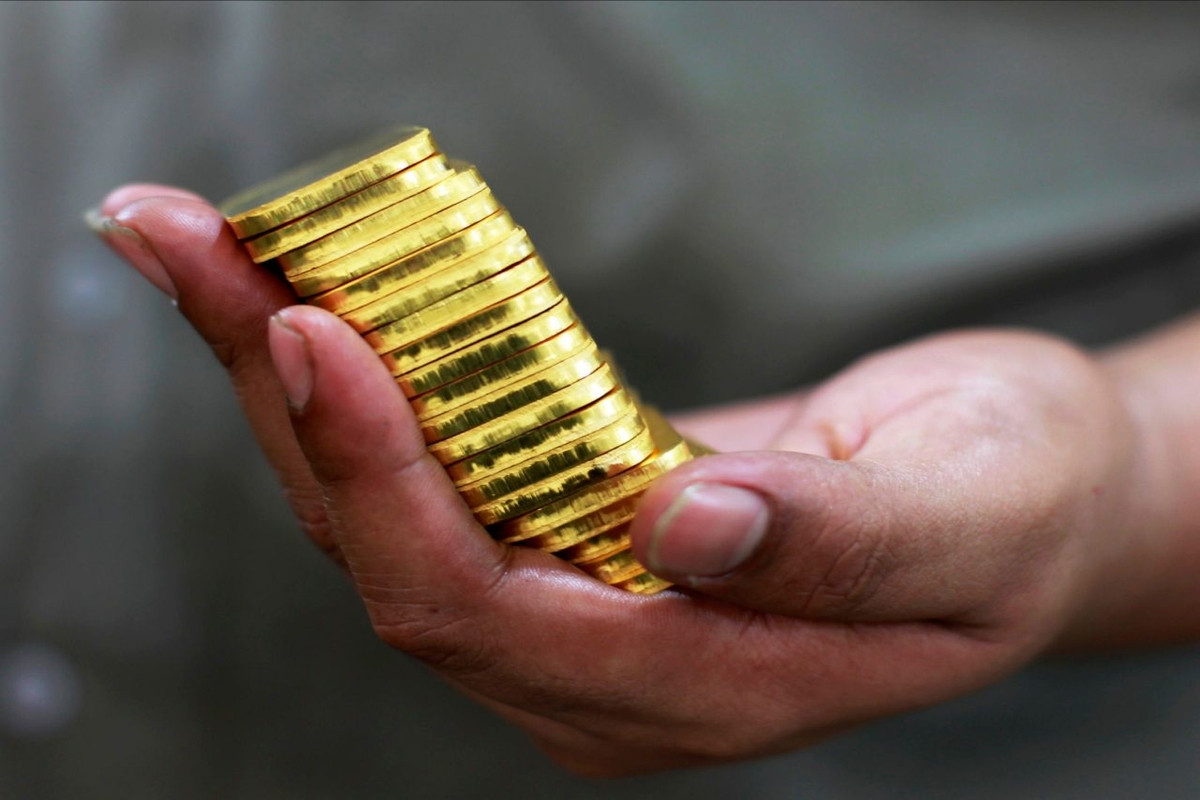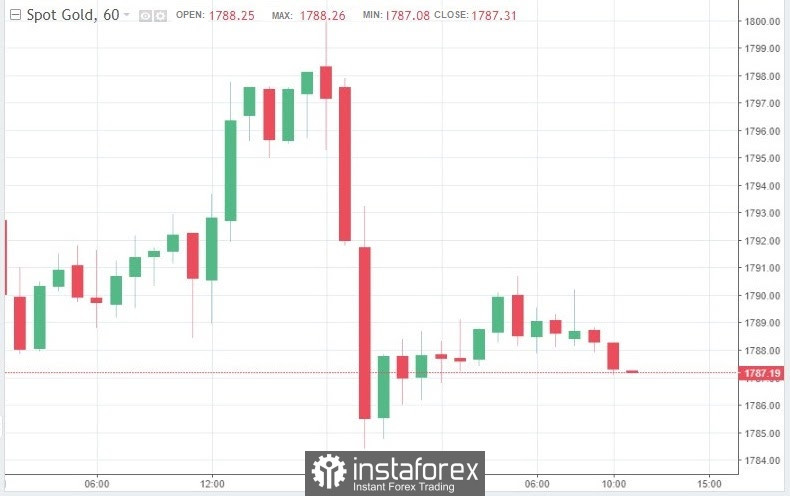
The price of the precious metal declined again despite the worsening epidemiological situation. Investors preferred risk to the defensive asset: US stock market sharply increased yesterday.
On Tuesday, gold closed trading lower, which is its second consecutive unsuccessful session. The asset plunged by 0.3% yesterday compared to the decline of 0.6% on Monday. In monetary terms, the losses amounted to $5.90, and th final level was $1,788.70.

Gold, which reached its all-time high last summer at the peak of the coronavirus pandemic, now seems unable to get at least some benefit from the tense epidemiological situation.
The new COVID-19 strain has become dominant in many countries of the world in less than a month. This suggests that the Omicron is more contagious than previous mutations in the coronavirus.
According to The Associated Press, the Omicron strain accounted for over 70% of infections in the United States last week. Compared to the previous seven-day period, the indicator increased almost 6 times and amounted to 650 thousand.
It is not only the high rate of spread of the new strain that is alarming, but also its lack of study. Until physicians fully assess the potential danger of the Omicron, there will be a concern in the world about the damage it can cause to the global economic recovery.
It would seem that the conditions for the growth of safe-haven assets are ideal, but not at this stage. Investors are now focused more on other pricing factors. One of them is the adoption of US President Joe Biden's bill on spending in the amount of $1.7 trillion.
On Sunday, it became known that Senator Joe Manchin, who has a lot of influence in the upper house of Congress, has refused to accept the plan for inward investment. This decision prompted economists to lower their forecast for economic growth in America for the next year.
The prospect of a slowdown in the economy has caused panic in the US stock market. On Monday, key stock indices fell more than 1%.
But on Tuesday, the indicators changed direction and switched to confident growth. Here, the S&P 500 index rose by 1.8%, Dow Jones Industrial Average also increased by 1.78%, and the NASDAQ Composite by 2.4%.
The encouraging comment by Senate Majority Leader Chuck Schumer supported the stocks' growth. He said that, despite J. Manchin's disagreement, the Democrats will start working on the bill in early 2022.
The announcement of the possible adoption of the Biden plan returned investors' appetite for risk, while the demand for gold fell even more. Analysts note that interest in bullion is also decreasing against the background of the rise in the yield of US government bonds.
Yields are rising on a wave of optimism: if the spending bill is passed, traders expect an even economic recovery, and, accordingly, an increase in interest rates next year.
Another factor that negatively affected gold's price this week is the high probability of low liquidity before the holiday. Many of the world's markets, including the gold market, will be closed on Friday for Christmas.
Moreover, some analysts believe that the reason for the sale of the precious metal is the desire of investors to fix Friday's profit. As a reminder, gold exceeded the psychologically important level of $ 1,800 at the close of last week. This happened for the first time since mid-November.
Nevertheless, there is another camp of traders who still believe in the bright future of the yellow asset and continue to buy bullion on the decline, hoping that the increasing coronavirus fears will provide support to gold.
 English
English 
 Русский
Русский Bahasa Indonesia
Bahasa Indonesia Bahasa Malay
Bahasa Malay ไทย
ไทย Español
Español Deutsch
Deutsch Български
Български Français
Français Tiếng Việt
Tiếng Việt 中文
中文 বাংলা
বাংলা हिन्दी
हिन्दी Čeština
Čeština Українська
Українська Română
Română

